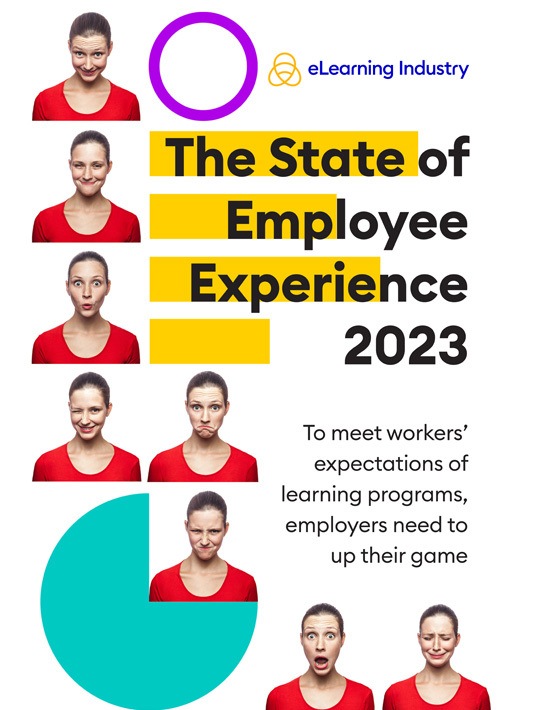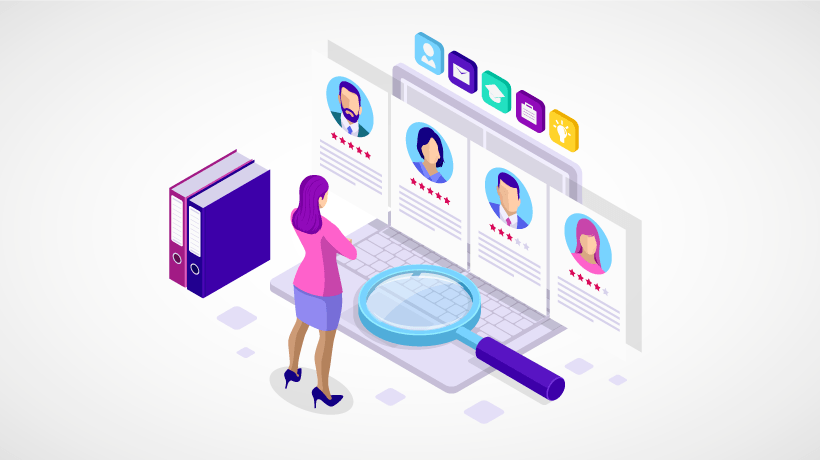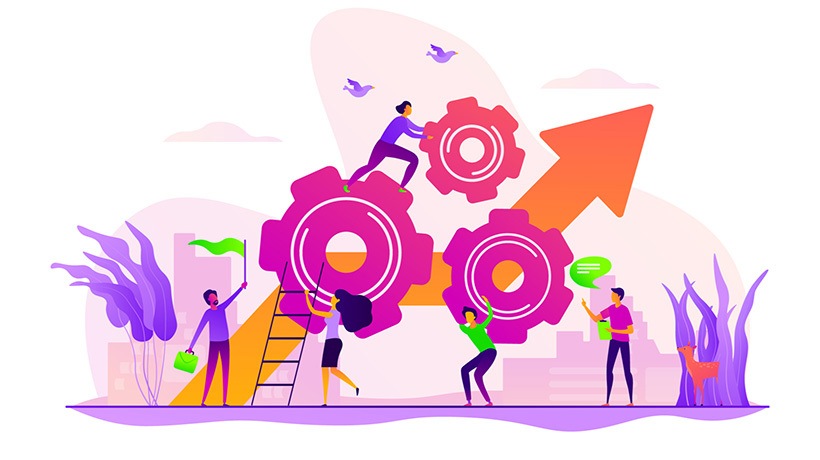Effective Onboarding Programs: Trends And Examples
Effective onboarding programs are crucial for introducing and orienting new employees to an organization's processes, systems, policies, and people. This process makes a new employee feel welcome, comfortable, and confident in their new role and surroundings. This can ensure their success in the organization and may lead to a long-term professional association.
Whether employees work remotely or from the office, onboarding is your chance to make a great first impression and ensure your newest team member feels welcome. In this article, we will learn about the current trends in onboarding programs and how to make them successful. We've also included some real-world examples to help you get started.
In This Article:
- Everything You Need To Know About The Onboarding Process
- Current Employee Onboarding Program Trends
- What Makes An Onboarding Program Successful?
- Why Is A Good Employee Onboarding Process Important?
- 13 Examples Of Effective Onboarding Programs
- How To Measure Your Onboarding Process's Success
- How To Create An Onboarding Program
- 11 Companies With The Best Onboarding Programs
Everything You Need To Know About The Onboarding Process
Employee onboarding is a structured and well-organized process designed to integrate new hires into the organization. This introduces new employees to their roles and responsibilities and helps them get acquainted with their colleagues, peers, and supervisors. Additionally, onboarding familiarizes new hires with the organization's policies and culture.
A well-planned and executed employee onboarding program can enhance employee productivity. This is because new hires are given the tools and knowledge required to perform their duties and tasks, which can lead to better employee engagement, higher job satisfaction, and lower employee turnover.
Another key aspect of a well-designed employee onboarding program is continued employee support. This helps new hires adjust to their surroundings and job responsibilities, feel confident about growing with the company, and visualize their future within the organization.
Current Employee Onboarding Program Trends
Workplaces are constantly evolving as processes, systems, and policies change in response to internal and external factors. As a result, employee onboarding programs and strategies must adapt to incorporate new concepts and ideas. Today, technology plays a vital role in every aspect of business operations, including employee onboarding. Let's explore some of the current trends in this area.
Pre-Onboarding
There's often a waiting period between an employee accepting a job offer and starting work. You can use this to your advantage by sending them all the information about their role and resources to help them with their tasks and activities. You can also ensure they have all the documents they must sign in advance to save time on their first day. Finally, get them excited about their new job by sharing information about the company-wide group activities to give them a sneak peek of your culture.
Customized Onboarding
Tailoring the onboarding process to individual roles enables companies to give new hires only the most relevant information. A tailored onboarding plan addresses individual needs and considers personal learning preferences and career aspirations. For example, new hires can be paired with a mentor in the beginning, helping them acclimate to the company and receive timely feedback.
Social Onboarding
Social onboarding refers to making new employees feel like a part of an organization's culture by helping them build connections with other employees and teams. A common approach to this is the buddy system, where new hires are paired with seasoned employees. This system encourages social interaction and promotes a sense of belonging within the company.
Company Culture Onboarding
Culture onboarding involves explaining a company's values, mission, and culture, allowing new employees to understand what's expected of them. This boosts the feeling of commitment to the company and makes new employees comfortable with the corporate environment. It also helps employees align their goals with those of the organization.
Advanced Onboarding
New employees tend to perform better when they have access to all the information and tools necessary for their role, rather than just the basic essentials. Through advanced onboarding, companies can empower these employees to become key contributors and integral members of the team. Technologies such as Artificial Intelligence (AI), Virtual Reality (VR), and AI-powered chatbots can enhance and streamline onboarding.
Specific Skill Onboarding
Specific skill onboarding can greatly benefit employees by ensuring they are well-prepared to meet job requirements and perform exceptionally from their first day. This process includes organizing specialized training sessions, workshops, and eLearning courses to help new employees become familiar with the necessary skill sets.
Data-Based Onboarding
Using data to improve onboarding processes is a game-changer. Thanks to data analytics, companies can determine whether their employee onboarding programs are successful and see if changes are necessary in the onboarding activities. Performance metrics also show the areas that need improvement.

What Makes An Onboarding Program Successful?
Does following trends guarantee that your onboarding program will succeed? The short answer is no. A successful onboarding program requires structured planning, personalization, engagement, feedback, and continuous support. Ideally, you must focus on specific aspects of your onboarding process to make it truly effective.
First, it's important to acknowledge each new employee's unique needs while preparing your current team for their arrival. Next, you should communicate your company's mission, vision, and culture effectively to foster a sense of belonging. Additionally, be clear about your expectations for new team members in terms of performance and specific goals.
Onboarding calls for personalized progress tracking, too. You must frequently check in with your new hires to increase engagement and resolve any issues they may encounter. However, remember that your organization's progress regarding onboarding programs is also being tracked. So, when you receive feedback from your new employees, it's crucial to act upon it as soon as possible so that they know their opinions count.
Another important tip for onboarding success is not overloading your team members with excessive or irrelevant information or new technologies. Around 81% of new hires believe they are given excessive information during orientation training. Hence, you must be careful while designing your training courses. Begin by briefly showing them what they'll be working on using equipment they're already familiar with, and ease them into new devices that may require a learning curve.
Why Is A Good Employee Onboarding Process Important?
An effective onboarding process is important for several reasons. Let's discuss them one by one below:
Strategic Employee Retention
Low turnover rates bring multiple benefits, such as controlled hiring costs, fewer repeat training sessions, and other administrative tasks related to backfilling. Did you know that about 20% of employees quit within the first 45 days of joining? However, a good onboarding process can reduce employee turnover by helping employees feel prepared and valued. If an employee crosses the 3-month mark, they will likely continue working with a company.
High Productivity
Proper onboarding strengthens employee knowledge, so companies can expect high productivity. New employees who have been onboarded effectively can more easily begin contributing positively to the organization's goals and objectives. Reports suggest that companies with a good employee onboarding program see a 70% increase in new employee productivity.
Solid Company Culture
Early introduction to company culture, values, and practices promotes a commitment to shared goals and experiences within the organization. It also establishes a cohesive work environment where employees can learn from each other and thrive.
High Job Satisfaction
Employees who understand their job responsibilities are likely to experience higher job satisfaction than those who do not know how to contribute to make a difference.
High Employee Engagement
Employee engagement is naturally higher when employees feel involved, committed, and ready to deliver. With good onboarding programs, new employees feel prepared from their first day on the job.
Focus On Company Growth
Company growth is nearly always guaranteed when employees are committed to contributing with complete dedication and focus. Motivated and driven employees frequently bring new ideas and solutions to work, facilitating collaboration and growth.
13 Examples Of Effective Onboarding Programs
Companies wanting to enhance the new hire experience through effective onboarding programs can consider the following 13 strategies.
1. Welcome Gifts
Welcome your new members by sending them a kit with a few things they might enjoy. These kits might include a mug with the company logo, some office supplies that will come in handy on the first day, or business cards to show them they're already part of the team. You can even write them a letter to welcome them to the corporate family. This small token of appreciation will go a long way in making them feel accepted and help ease their anxiety.
2. Goal Setting Before The First Day
You need to set the tone for how new employees will be welcomed and accepted by highlighting the importance of goal setting and their contributions. Encourage your new employees to immediately create personal goals regarding their new job roles while sharing the company's objectives. You don't have to wait for them to complete the onboarding process to do this. This will give you a clear picture of their priorities so that you can help them create an individualized development plan. Considering the above, isn't it surprising that around 60% of employers do not have milestones defined for their new employees?
3. Engaging Compliance Training
Compliance training may be compulsory during onboarding, but it shouldn't be boring. The more engaging your policy training content is, the better your new hires will retain knowledge and put things into context. Instead of throwing them in a sea of papers, books, and PDFs to navigate independently, train them through videos, online games, or quizzes. Make this process a well-guided initiative to avoid confusion. Keep in mind, though, that employees should not have any unanswered questions at the end of such sessions.
4. Welcome Them With An Announcement
The best way to welcome new employees while informing other teams about their arrival is to make a company-wide announcement. This will keep everyone in the loop about the new people joining the corporate family, including those who will likely not directly work with the new hires. Consider sharing it in your communication app to create a more personal and friendly experience, as people can send well wishes and reactions.
5. Break The Ice
New employees can feel awkward when entering an unknown environment. The person in charge of onboarding must make things less stressful by breaking the ice as quickly as possible. If there is more than one new employee, arrange a meeting for all of them to get to know each other before having them meet with the rest of the organization. This way, they will feel more comfortable knowing there's a familiar face around.
6. Prepare Their Office
Make their first day special by having their new office ready and decorated. You can also ask them if they have any preferences for equipment, like a specific laptop brand or an ergonomic chair. If they're working remotely, ensure they have all the tools they need to succeed before they clock in for the first time.
7. Onboarding Buddy
Help your new hires acclimate faster by offering them support from an insider. Ask an existing employee to be their onboarding buddy and guide them through the process. It's better to learn how things are done firsthand, as this will increase team building. However, you can also invest in an employee onboarding system. This software will act as their virtual onboarding buddy and help you assign them tasks and track their progress. Although this is more impersonal, it gives your new employee more freedom and autonomy.
8. Product Samples
Offer new hires samples of your products in addition to the welcome kit. With the free samples, new employees can learn the product's features, how it works, and what sets it apart from others on the market. You can even ask them for feedback to improve your offerings.
9. Workshops
Consider hosting an onboarding workshop when sharing general information with your new hires. You can inform them about policies, HR processes, safety rules, and other helpful details, especially if it is a large group of new recruits. After the workshop ends, email them all the resources so they can refer to the material whenever they like to refresh their memory.
10. Breakroom Chat
Coffee chats can help new employees adjust and feel welcomed in the workplace. Each day, they can meet with a few of your existing employees for a few minutes to talk about work, ask for tips or advice, and get to know each other better. Encourage everyone to participate, even management, so your team can meet new members and build solid camaraderie with different teams or departments.
11. Welcome Breakfast
Good food always makes conversations more interesting and enjoyable. Hosting a welcome breakfast or lunch is a great way to introduce new hires to existing employees. This creates a casual atmosphere for employees to interact with each other in a relaxed setting.
12. Onboarding Seminars
In these seminars, companies typically share information about company policies, the code of conduct, goals, long-term growth opportunities, etc., to enable new hires to understand the company's vision and direction. For remote employees, these sessions can be conducted online or through on-demand digital platforms. Onboarding software can be highly useful in such cases. This market is expected to reach $1.34 billion globally in 2025.
13. Happy Hour
Who does not like happy hours? These casual events allow employees to socialize in an entirely laid-back environment. After-work parties or team events help new employees loosen up and bond with their coworkers. This can lead to significant improvements in employee productivity through effective communication and problem-solving.
How To Measure Your Onboarding Process's Success
We have covered how to create a winning onboarding program, but how will you measure its success? Without metrics, it will be challenging to refine your employee onboarding program. Hence, most companies define Key Performance Indicators (KPIs) to ensure accurate success tracking of their employee onboarding programs. Here, data analysis is crucial to measure the effectiveness of these programs. Some metrics to consider are employee engagement, retention rate, productivity, and feedback from your new hires and management.
Next, you can measure the completion rate of onboarding tasks and compare it with previous data. You can also measure cost-effectiveness by comparing expenses to ROI. Employee satisfaction surveys help with this by allowing you to check how happy employees are with their onboarding. Decreased turnover and higher employee satisfaction rates are signs of a successful onboarding strategy.
Once employees are onboarded and begin working, you can conduct performance reviews to verify whether they have met the goals and targets set for them in the initial months. This helps decision-makers and managers assess the effectiveness of their onboarding plans.
How To Create An Onboarding Program
The first and most crucial step in creating an onboarding process is to define the goals and the timeline. Next, personalize the onboarding experience as much as possible to engage your new hires fully. Let us briefly discuss the steps below:
Welcome Message
A personalized onboarding message from the CEO, manager, or team leader works wonderfully, making new hires feel welcomed and appreciated. You can write a warm email, create a video, or simply deliver a handwritten note. These actions show new hires that the company wants them to succeed at their jobs and is keen to celebrate their successes.
Create A List Of What's Necessary To Succeed In Roles
Share a list of all the tools employees will need upon joining to complete their tasks successfully. You can include details about software access, key contacts, and learning resources, among other things, to ensure they enter the workplace fully prepared on their first day. This boosts new employees' confidence and empowers them to make suitable decisions throughout the onboarding process.
Establish A Framework For The Onboarding Curriculum
Giving new hires an onboarding curriculum enables them to understand the topics that will be covered in the training sessions. Plus, they will be able to understand the company's views on career development and whether opportunities will be available later as they progress. This is a good place to start compliance training and explain compliance and code of conduct requirements.
Set Communication Channels
At this stage, you should explain the company's communication channels. Give new hires access to group chats on different platforms, along with information about key contacts, mentorship programs, etc. Tell them whom they can contact for queries related to software or hardware issues, taxation, and other matters.
Involve Managers
Managers play a crucial role in the success of employee onboarding programs. They set expectations, provide feedback, and outline development plans for employees. Their active involvement reassures new hires that ample opportunities for learning and growth are available.
Streamline Paperwork
Using digital platforms for employee onboarding programs is among the best decisions you will make as a company. Digital onboarding platforms greatly eliminate the need for paperwork and make record-keeping easy and stress-free. New hires can complete all the forms online. Training sessions delivered via such platforms allow employees to access the materials they need and revise as they like.
Identify Metrics To Measure Effectiveness
HR teams, employers, and managers can use onboarding analytics tools to assess new hire performance, engagement levels, and satisfaction rates. This helps them fine-tune or modify their programs for better or expected results.
Stay In Touch
Regular check-ins are an excellent way to determine new employees' performance and whether they have adjusted well to the company's culture and policies. This supports continuous employee engagement and development goals. Companies may conduct 30-day, 60-day, or 90-day follow-ups to gather information on employee experiences.
11 Companies With The Best Onboarding Programs
A strong employee onboarding program enhances engagement, success, and ultimately, retention. The most successful companies don't just stick to the basics; they create comprehensive onboarding experiences that make new hires feel valued and prepared. Below, we present 11 companies renowned for their highly effective onboarding programs. They excel in various areas, from personalized mentorship and interactive learning to culture-driven initiatives. By examining these programs, HR teams and leaders can develop exceptional onboarding plans for their own organizations.
Netflix: A Culture And Leadership-Driven Onboarding Program
Netflix has a culture-driven onboarding program where transparency and freedom are key aspects of the plan. New hires are given the Netflix Culture Deck, which is a 127-page presentation that highlights how freedom and responsibility replace rules and constant monitoring to bring out the best in employees.
DigitalOcean's: A People-First Hiring Experience
DigitalOcean's onboarding plan involves introducing new hires to the company via an interesting weekly schedule called "Welcome to DigitalOcean." It includes interactive learning sessions, leadership meetups, and company culture orientation programs. DigitalOcean takes a comprehensive approach to its employee onboarding plan.
Spotify: Innovation Through "Controlled Chaos"
Spotify, an incredibly popular music streaming platform, has innovative new hire onboarding sessions. These training sessions deliver technical knowledge and offer product training. Spotify also organizes informal meetups and networking events to ensure new hires feel comfortable. Spotify's internal guide, "The Band Manifesto," outlines company values and culture. It is popularly called a company with a "controlled chaos" culture.
Taktile: Continuous Feedback In Onboarding
Taktile's onboarding process is entirely data-driven, where continuous feedback is the key to successful onboarding. The company follows a structured approach to track performance and share feedback with its new employees. This enables change and growth.
Zapier: Efficient Onboarding Through Automation
If onboarding automation is your goal, studying Zapier's employee onboarding program will be highly beneficial. Zapier's remote-friendly onboarding offers convenient online learning, mentoring, and leadership support. New hires can gather knowledge about the company culture, project management tools, accounting software, and other relevant tools to support their job responsibilities.
Buffer: Role And Social Integration With A Buddy System
Buffer's onboarding emphasizes social integration like no other program does. To make new hire orientation friendly and straightforward, a role buddy and a culture buddy are assigned to them. The program offers a detailed guide on expectations and responsibilities. With such a system, ensuring onboarding success through learning and motivation is simple.
Google: The Noogler System For Seamless Onboarding
Google's onboarding program is called Noogler Orientation. It features peer mentorship and extensive training sessions. It focuses on ensuring employees comprehensively understand Google's core values. The Noogler cap and kit are given at the beginning of the process to ensure belonging. Google also promotes open dialogue and offers all-encompassing support to welcome new hires.
Zappos: Immersive Customer Support Training
Zappos has a unique four-week onboarding process that focuses on customer service training. Even if they do not directly work in customer service, every new hire must complete this training. Their orientation plan also includes introducing new hires to the company culture and values. What's more interesting is that Zappos has a three-day culture boot camp open to other companies that want to learn about their culture and customer service approach.
HubSpot: Comprehensive Product Training
HubSpot, known for its hands-on approach to onboarding, offers self-paced learning modules. This onboarding plan promotes team interactions and product training. This onboarding program can be incredibly helpful for companies that need their employees to focus on developing and improving products.
Meta: Immersive Bootcamp Onboarding
Meta's onboarding program is called "Bootcamp." It is a 6-week program that offers new hires immersive experiences regarding company culture and technical input. This program has been designed to promote growth within the organization and ensure success in future roles.
Amazon: Empowering People And Promoting Excellence
Amazon's onboarding program is all about leadership, diversity principles, inclusion, and structured learning. The company gives new hires access to learning portals that offer extensive knowledge. Amazon takes performance tracking seriously, and its onboarding program includes in-depth performance measurement.
Conclusion
A successful employee onboarding process can shape your new hire's journey and reduce turnover. This is why it's crucial to be informed of new trends in the field and adjust your plans based on your budget and resources. Overall, it's best to identify which elements suit your organization's needs and use metrics to gauge its success so that you can revise your plan of action accordingly.
If you're searching for a content provider to help you launch a top-notch onboarding strategy, check out how we've ranked the best employee onboarding content providers. Our top list features the leading outsourcing partners to consider for your new hire training program.
FAQs About The Onboarding Process
The ideal duration of an onboarding program usually varies based on the company and its industry. However, a well-planned onboarding program can last anywhere from 30 to 90 days or more, depending on the training and orientation requirements. A well-designed onboarding program typically includes pre-onboarding, training, cultural introduction, mentorship, and regular feedback to promote new employee growth.
Technology is a key component of modern employee onboarding programs. It helps rationalize and improve the process by supporting administrative tasks and improving employee engagement. Technology also reduces the need for paperwork, as Learning Management Systems (LMS), Virtual Reality (VR), and other tools can be used to deliver training. Digital collaboration has been on the rise for many years and will continue to grow in the future.
Measuring the success of an employee onboarding program requires defining and tracking Key Performance Indicators (KPIs) like employee engagement, retention rates, productivity levels, and more. Employee satisfaction surveys and feedback systems can help a company’s decision-makers understand the effectiveness of its training programs. Tracking active employee participation can further help assess the effectiveness of training and orientation programs within an organization.
Companies should focus on interaction to ensure engagement in virtual or remote onboarding. This includes interactive elements such as live video sessions, virtual meetups, gamified learning modules, etc., which can help improve engagement. Implementing a buddy system and ensuring clear communication can also make learning practical and enjoyable for new hires. Lastly, online communication and collaboration tools enable employees to communicate with other teams and become part of the workplace culture.









